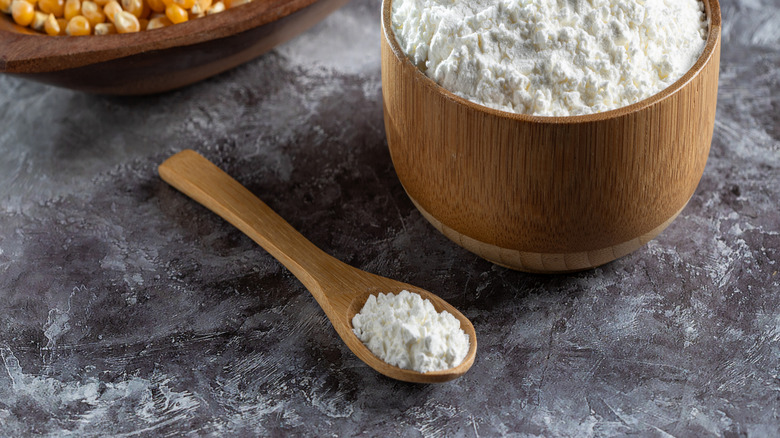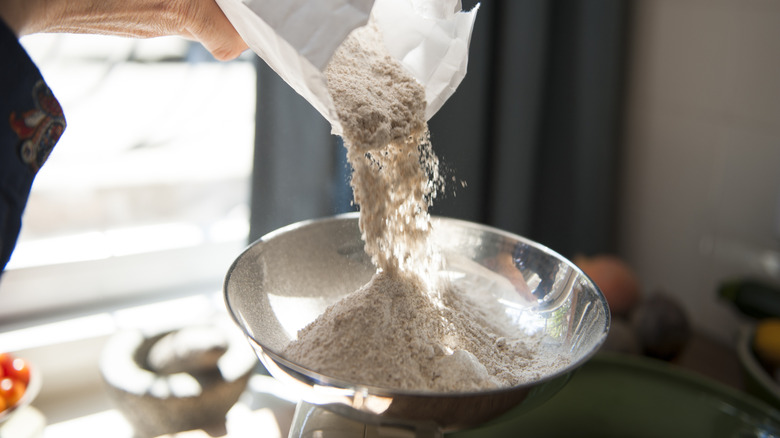All-Purpose Flour Is One Of The Best Cornstarch Swaps, And Here's The Ratio To Make It Work
Cornstarch is the secret behind many of your favorite treats. Whether it's a perfectly chewy cookie straight from the oven, a crispy piece of freshly fried chicken, or a pie filling you keep coming back for more of, cornstarch really can do it all. While many home cooks and bakers keep plenty of this star-performing ingredient stocked up on their pantry shelves, what happens when the dreaded moment comes and you realize you've run out of this staple?
One of the best and easiest replacements for cornstarch is all-purpose flour, and that goes for everything from thickening up a sauce or gravy to adding body to a baked good. As it turns out, the key is using a 2-to-1 ratio when making this swap — aka, you'll need twice as much flour as you would cornstarch. This is because flour isn't a pure starch like cornstarch, meaning it doesn't have as much strength when it comes to adding thickness and texture to your food.
Tips for using all-purpose flour in place of cornstarch
Cornstarch and all-purpose flour may appear similar at first, but their differences in starch content require you to make some changes when substituting one for the other. Cornstarch is essentially entirely made of starch, containing over 99%, while all-purpose flour has approximately 68% starch. Because of starch's ability to add thickness, moisture, and texture to food, the amount found in flour and cornstarch will affect your end result. This is why the 2-to-1 ratio is so essential. So, if you normally use a tablespoon of cornstarch to thicken up a sauce, for example, you'll want to add an extra helping of flour to ensure it has the consistency you're looking for.
When you're using flour as a thickener, it's important to add your flour to cold water to dissolve before adding that mixture to your sauce, which creates a slurry. However, you'll need to make sure that your flour is fully cooked in order to avoid a raw flour taste. You'll be fine if you're adding a flour and water mixture to a boiling sauce, as the flour will cook through, but if you're adding it to a sauce that isn't boiling, you can make a roux by adding equal parts flour and butter and cooking it over medium heat. The only difference you'll notice when using flour instead of cornstarch to thicken sauces and fillings is that, because flour isn't pure starch, it will create a sauce that is cloudier and less glossy than one made with cornstarch. Of course, if you use flour to prevent thin Alfredo sauce, the roux's opacity won't be an issue.

